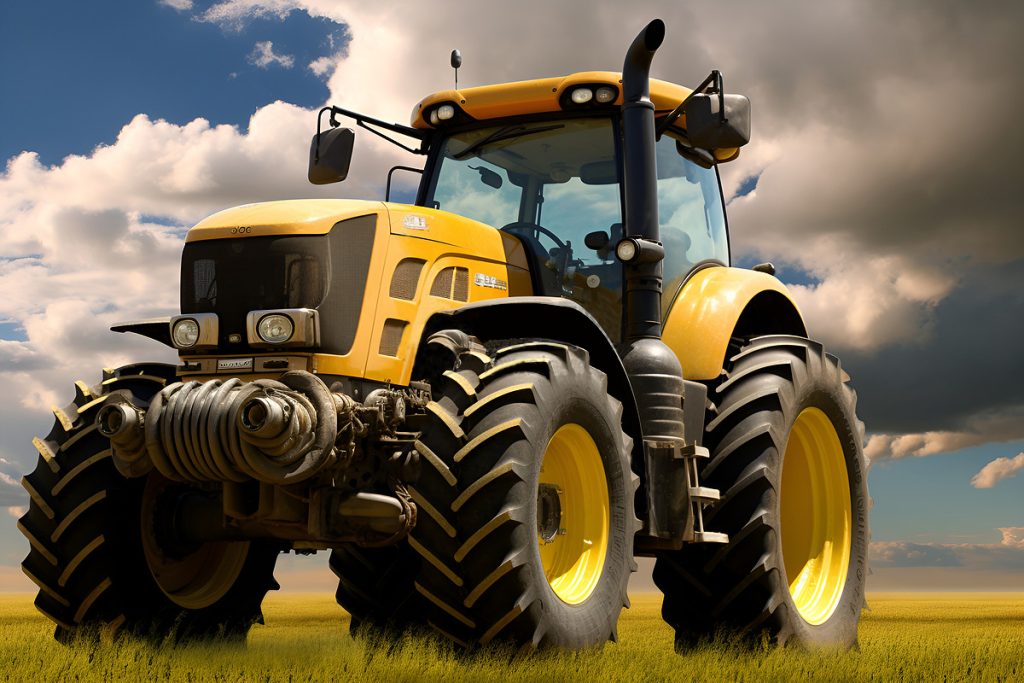In the U.S., corn harvest times vary by region, which not only affects your operational planning but also directly impacts the timing of your agricultural equipment purchases. If you can choose and buy equipment based on the corn harvest dates, you can greatly improve efficiency during the harvest season, reduce crop loss, and lower operating costs. However, with different harvest times and weather conditions across regions, figuring out the best equipment and when to buy it can be confusing.
When purchasing agricultural equipment, you need to consider more than just the size of your operation and the harvest schedule. You also have to think about the long-term costs of using the equipment, maintenance needs, and how well it handles different terrains. Planning your equipment purchases in advance helps you avoid issues like equipment shortages or price increases during the peak harvest season. Plus, you need to carefully balance equipment performance and your budget.
In this article, we will take a close look at how to create a smart purchasing strategy based on U.S. corn harvest dates. By answering several common questions, you will clearly understand how to choose the right equipment, plan the best time to buy, and ensure that your machinery runs efficiently when it matters most, bringing you higher returns for your farming operations.

Contents
- 1 1. How Corn Harvest Dates Affect Equipment Purchases: Common Questions and Solutions
- 1.1 How to Choose the Right Time to Purchase Equipment Based on Harvest Dates?
- 1.2 How to Choose the Right Equipment Model for Different Farm Sizes?
- 1.3 How to Choose More Adaptive Equipment Based on Climate Changes?
- 1.4 How to Balance Equipment Durability and Maintenance Costs?
- 1.5 How to Choose Cost-Effective Equipment Within a Budget?
- 2 2. Scientific Decision-Making Framework for Optimizing Equipment Purchases Based on Harvest Dates
- 3 3. Real-Life Case Studies: How to Plan Equipment Purchases Based on Corn Harvest Dates
- 4 Conclusion:
1. How Corn Harvest Dates Affect Equipment Purchases: Common Questions and Solutions
In different regions and under varying climate conditions, corn harvest times can differ. These differences directly impact farmers’ equipment needs. Below are some common questions farmers face when purchasing agricultural equipment and the solutions to these issues.
How to Choose the Right Time to Purchase Equipment Based on Harvest Dates?
Question: Corn harvest dates vary across the U.S. How can farmers determine the right time to buy equipment to avoid shortages or delays?
Solution:
Farmers should plan equipment purchases at least 2-3 months before the corn harvest, depending on their region. For example, in southern states like Texas, where harvest begins earlier, farmers should aim to buy equipment by June. In the Midwest, such as Illinois and Iowa, equipment should be ready between July and August to meet the September harvest peak. Planning ahead helps farmers avoid shortages during the busy season and ensures the equipment is properly prepared for use.
How to Choose the Right Equipment Model for Different Farm Sizes?
Question: Farmers have different field sizes, which means the required equipment models vary. How can they choose the most suitable model based on the size of their corn fields to maximize efficiency?
Solution:
For small farms (less than 500 acres), farmers can choose mid-size harvesters to reduce the initial investment while still meeting their harvesting needs. Large farms spanning over 1,000 acres benefit from using large combine harvesters equipped with wide headers, which can significantly increase harvesting efficiency per hour. For farms growing multiple crops, selecting a harvester that supports multiple header types ensures that the equipment can be used efficiently in crop rotation.
How to Choose More Adaptive Equipment Based on Climate Changes?
Question: Climate change has made weather conditions harder to predict, especially in northern regions where early frost and frequent rain increase harvest risks. How can farmers choose equipment to handle these uncertainties?
Solution:
Farmers should choose equipment with high adaptability, such as tracked harvesters, which maintain excellent mobility in wetlands and muddy fields, reducing the risk of getting stuck. Additionally, selecting equipment with an intelligent climate monitoring system allows real-time weather tracking and automatic adjustments to operation settings. This ensures that even in harsh weather conditions, the equipment can still perform efficiently, reducing crop loss.
How to Balance Equipment Durability and Maintenance Costs?
Question: During the intense corn harvest season, long-term maintenance and frequent use can lead to high costs. How can farmers ensure their equipment remains durable over time while keeping maintenance costs low?
Solution:
Farmers should choose equipment with an automatic lubrication system and high-wear-resistant components to reduce wear and tear during heavy use. Additionally, selecting equipment from proven brands ensures a longer lifespan and lower failure rates. Farmers can also implement a regular maintenance plan to prevent equipment breakdowns in advance, reducing unexpected downtime and repair costs.
How to Choose Cost-Effective Equipment Within a Budget?
Question: With a limited budget, how can farmers maintain equipment performance while controlling both initial purchase costs and long-term usage costs?
Solution:
Farmers should approach this decision by looking at the Total Cost of Ownership (TCO), balancing the initial investment with long-term operational costs. For example, although high-efficiency equipment may have a higher upfront cost, it can save significant amounts in the long run through lower fuel consumption and reduced maintenance costs. Choosing a supplier that offers financing options can also help farmers spread out the high initial investment, allowing them to gradually pay for the equipment and ease financial pressure.
2. Scientific Decision-Making Framework for Optimizing Equipment Purchases Based on Harvest Dates
Farmers can make informed purchasing decisions by considering corn harvest dates, budget constraints, and climate factors. Below are some key steps to help farmers optimize the timing and selection of equipment purchases.
Assess Current Equipment and Operational Needs
Farmers should evaluate their current equipment 3-6 months before the start of the harvest season. They need to check the performance and maintenance status of their machinery and determine if they need to purchase new equipment or upgrade existing machines. At the same time, they should also consider the scale of their corn production and crop characteristics to clearly define their equipment needs.
Plan Purchases in Advance to Avoid Peak Season Price Increases
Farmers should start communicating with equipment suppliers 2-3 months in advance to ensure that equipment arrives before the harvest. Purchasing early not only helps avoid price hikes but also ensures delivery in case of supply chain disruptions. During busy seasons, the demand for equipment rises significantly, affecting both prices and delivery times. Planning purchases ahead of time is a key strategy for controlling costs.
Regular Equipment Testing and Maintenance to Ensure Smooth Harvest Operations
Once the equipment arrives, it should be tested and adjusted as soon as possible. By following a regular maintenance and servicing plan, farmers can ensure their equipment is in optimal condition for the harvest season. This includes checking the lubrication system, adjusting transmission components, and testing operational efficiency to make sure the equipment performs well under heavy use.
3. Real-Life Case Studies: How to Plan Equipment Purchases Based on Corn Harvest Dates
Case 1: Early Purchase Plan for a Mid-Sized Corn Farm in Illinois
A corn farmer in Illinois, anticipating the September harvest peak, began discussions with us in May to purchase a high-efficiency combine harvester. Thanks to early planning, the farmer avoided the price increases typical during harvest season. After the equipment arrived, there was ample time for thorough testing and adjustments. As a result, the equipment was fully ready for the September harvest, increasing the farm’s harvest efficiency by 15%.
Case 2: Tracked Harvester Application for a Wetland Farm in North Dakota
A farmer in North Dakota, facing muddy fields due to wet conditions, chose a tracked harvester and made the purchase three months in advance. By buying early, the farmer ensured the equipment arrived before the rainy season and had enough time for testing. The machine’s superior mobility helped avoid delays from stuck equipment and downtime, reducing crop loss during the harvest by 20%.
Conclusion:
Enhancing Equipment Purchasing Efficiency and Cost-Effectiveness Through Smart Decision-Making
The varying corn harvest seasons and unpredictable weather in the U.S. make agricultural equipment purchasing crucial. By carefully planning the purchase timing and considering crop scale and climate conditions, farmers can increase operational efficiency while keeping costs under control.
Balancing Technology and Cost
Our agricultural equipment, with optimized design and intelligent features, helps farmers strike the right balance between efficiency and cost management. Whether dealing with complex terrain or unpredictable weather conditions, we offer customized equipment solutions tailored to your needs.
Comprehensive After-Sales Service and Spare Parts Support
We provide round-the-clock after-sales service and localized spare parts supply to ensure that your agricultural equipment runs efficiently during the harvest season. This helps reduce downtime and boosts your harvesting productivity.

